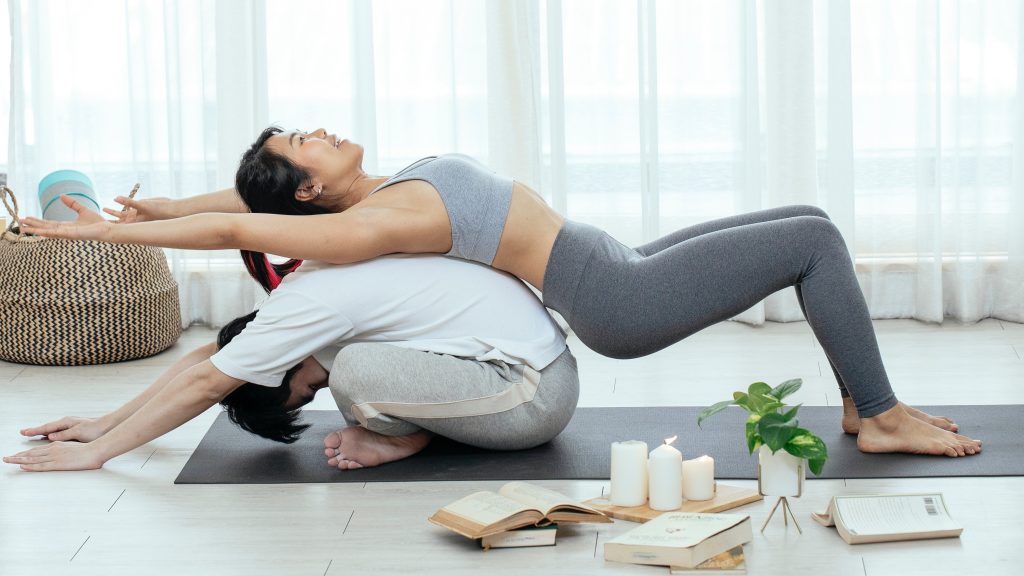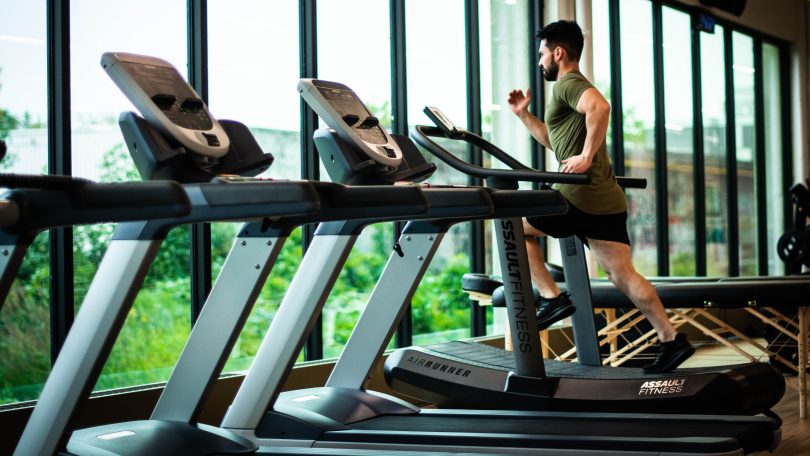Introduction:
Welcome to our comprehensive guide on designing your dream home gym. In this article “Designing Your Dream Home Gym: Expert Tips for a Functional and Inspiring Space”, we will provide you with expert tips and essential advice to help you create a functional and inspiring space for your workouts. A well-designed home gym offers numerous benefits, from convenience and flexibility to motivation and privacy. By following the steps outlined in this guide, you’ll be able to assess your fitness goals, work within space constraints, choose the right location, plan the layout, and incorporate key elements that will transform your home gym into a personalized sanctuary. So let’s dive in and discover how to design a dream home gym that will empower you to achieve your fitness aspirations.
- Discuss the increasing popularity of home gyms and the benefits of having a well-designed space for workouts.
- Emphasize the importance of creating a functional and inspiring environment to stay motivated and achieve fitness goals.
Step 1: Assess Your Fitness Goals and Space Constraints
- Determine your fitness goals (weight loss, strength training, cardio, etc.) to guide your gym design.
- Evaluate the available space in your home and consider any constraints, such as room size, ceiling height, and ventilation.
Step 2: Choose the Right Location
- Select a suitable area in your home, considering factors like natural light, privacy, and proximity to amenities.
- Ensure the space has proper flooring, electrical outlets, and sufficient ventilation for a comfortable workout environment.
Step 3: Plan the Layout and Equipment Placement
- Design a layout that maximizes the available space and facilitates efficient movement during workouts.
- Research and select essential gym equipment based on your fitness goals and space limitations.
- Consider versatile equipment options to save space and accommodate different types of exercises.
Step 4: Create a Welcoming Atmosphere
- Use colors that promote energy and motivation, such as vibrant accents or motivational quotes on the walls.
- Incorporate mirrors to create the illusion of a larger space and allow for proper form during exercises.
- Install appropriate lighting fixtures that provide ample brightness for safety and visual appeal.
Step 5: Ensure Adequate Storage and Organization
- Include sufficient storage options, such as shelves, cabinets, or wall-mounted hooks, to keep equipment and accessories tidy.
- Utilize vertical space by incorporating wall-mounted racks or adjustable shelving units to save floor space.
Step 6: Install Sound System and Entertainment
- Set up a quality sound system to enjoy energizing music during workouts.
- Consider installing a television or projector for entertainment during cardio sessions or following workout videos.
Step 7: Provide Adequate Ventilation and Temperature Control
- Install proper ventilation systems, such as fans or air conditioning, to maintain good air quality and regulate temperature.
- Ensure the gym is well-insulated to prevent temperature extremes that can affect comfort and equipment performance.
Step 8: Incorporate Inspirational Motifs
- Personalize the space with motivational posters, artwork, or photographs to inspire and uplift during workouts.
- Consider incorporating plants or greenery to add a touch of nature and create a calming environment.

Photo by Karolina Grabowska: https://www.pexels.com/photo/crop-young-sportswoman-unfolding-blue-yoga-mat-4498573/
Step 9: Safety Measures
- Install appropriate safety equipment, such as fire extinguishers and a first aid kit, within easy reach.
- Ensure electrical outlets are properly grounded and equipment is well-maintained to prevent accidents.
Step 10: Personalize the Space with Motivating Elements
- Hang motivational quotes or posters that inspire and encourage you during workouts.
- Display personal achievements or progress photos to remind yourself of your fitness journey.
- Incorporate elements that reflect your interests or hobbies, such as sports memorabilia or artwork.
Step 11: Consider Flooring Options
- Choose appropriate flooring that is durable, slip-resistant, and easy to clean.
- Rubber flooring or interlocking foam tiles are popular choices for home gyms as they provide cushioning and protect the subfloor.
Step 12: Create Zones for Different Workouts
- Divide your gym space into zones based on different workout activities, such as cardio, strength training, and stretching.
- Clearly define each zone using designated equipment or floor markings to optimize functionality and workflow.
Step 13: Incorporate Functional Storage Solutions
- Invest in storage solutions specifically designed for fitness equipment, such as dumbbell racks, medicine ball stands, or resistance band hangers.
- Utilize wall-mounted storage options to free up floor space and keep your gym clutter-free.
Step 14: Install Mirrors Strategically
- Place mirrors in strategic positions to allow you to check your form and technique during exercises.
- Consider installing a full-length mirror to evaluate your posture and alignment.
Step 15: Integrate Technology for Enhanced Workouts
- Explore fitness apps, smart devices, or wearable fitness trackers to monitor your progress and enhance your workout experience.
- Incorporate a wall-mounted screen or tablet holder to stream workout classes or follow instructional videos.
Step 16: Create a Relaxation Corner
- Designate a small area within your home gym for relaxation and cooldown exercises.
- Include a comfortable mat or foam roller for stretching and relaxation exercises.

Photo by Karolina Grabowska: https://www.pexels.com/photo/crop-fit-sportswoman-unfolding-fitness-mat-on-floor-4498603/
Step 17: Regular Maintenance and Cleaning
- Develop a routine to clean and maintain your home gym equipment regularly.
- Wipe down equipment, vacuum or sweep the floor, and inspect for any signs of wear and tear.
Step 18: Maintain a Regular Exercise Routine
- Establish a consistent exercise schedule and commit to regular workouts in your home gym.
- Set goals and track your progress to stay motivated and maintain discipline.
Step 19: Stay Organized and Decluttered
- Regularly declutter and organize your home gym to create a clean and inviting space.
- Put equipment back in its designated place after each use to prevent clutter and promote safety.
Step 20: Seek Professional Advice, if Needed
- Consider consulting with a professional fitness trainer or interior designer specializing in home gyms.
- They can provide personalized guidance and help optimize your gym layout and equipment selection.
Step 21: Stay Inspired and Motivated
- Continuously seek new workout ideas, try different exercise routines, and explore fitness trends to keep your workouts fresh and exciting.
- Follow fitness influencers or join online communities to stay connected and inspired by like-minded individuals.
Step 22: Evolve with Your Fitness Journey
- Regularly assess your fitness goals and adjust your home gym setup accordingly.
- Upgrade or add new equipment as needed to support your changing fitness needs and interests.
Step 23: Incorporate Safety Measures
- Keep your home gym environment safe by checking equipment for any signs of damage or malfunction.
- Follow proper safety protocols during workouts, such as using correct form and utilizing safety features on equipment.
Step 24: Involve Friends and Family
- Encourage your loved ones to join you in your home gym workouts for added motivation and accountability.
- Create a supportive and inclusive environment where everyone can work towards their fitness goals together.

Step 25: Enjoy the Benefits of Your Dream Home Gym
- Reap the rewards of having a functional and inspiring space for your workouts.
- Experience the convenience, flexibility, and privacy of exercising at home while achieving your fitness aspirations.
Step 26: Incorporate Functional Accessories
- Consider adding functional accessories to enhance your workouts, such as resistance bands, stability balls, or foam rollers.
- These accessories can add variety to your exercises and target different muscle groups.
Step 27: Create a Refreshment Station
- Include a small area in your home gym with a mini-fridge or water dispenser to stay hydrated during workouts.
- Stock it with healthy snacks and beverages to refuel after intense sessions.
Step 28: Personalize Your Workout Playlist
- Curate a motivating and energizing workout playlist with your favorite songs and genres.
- Invest in wireless speakers or headphones for a seamless and immersive music experience.
Step 29: Seek Professional Guidance
- Consult with a fitness professional to create a personalized workout plan that aligns with your goals.
- They can provide guidance on exercises, intensity levels, and progression to help you achieve optimal results.
Step 30: Prioritize Self-Care and Recovery
- Dedicate a portion of your home gym to self-care activities like stretching, foam rolling, or yoga.
- Incorporate recovery practices such as meditation, deep breathing exercises, or using massage tools to enhance relaxation.

Photo by Sebastian Pociecha: https://www.pexels.com/photo/photo-of-dumbbell-near-black-mat-4065936/
Conclusion:
Designing your dream home gym is an exciting and rewarding endeavor that allows you to create a functional, inspiring, and personalized space to pursue your fitness goals. By following the expert tips outlined in this guide, you can optimize your home gym for maximum efficiency, motivation, and enjoyment.
From assessing your fitness goals and space constraints to choosing the right location, planning the layout, and incorporating motivating elements, each step is crucial in creating a space that meets your specific needs and preferences. Additionally, considerations such as storage, ventilation, safety measures, and incorporating technology further enhance the functionality and comfort of your gym.
As you embark on your fitness journey within the confines of your own home, remember to stay organized, maintain a regular exercise routine, and adapt to your evolving needs. Seek professional advice when needed, involve your loved ones for added support, and prioritize self-care and recovery to ensure a well-rounded approach to your fitness routine.
Designing and maintaining your dream home gym is an ongoing process that requires dedication and commitment. However, the rewards are significant—convenience, flexibility, and the ability to create an environment that motivates and empowers you on your fitness journey. Embrace the opportunities, challenges, and personalization that come with designing your home gym, and enjoy the physical and mental benefits it brings to your overall well-being.
Remember, your dream home gym is more than just a space for workouts; it is a sanctuary where you can push your limits, achieve your fitness aspirations, and ultimately transform your life for the better. So, invest in creating a space that inspires you, supports your goals, and brings you closer to becoming the best version of yourself. Now, it’s time to turn your dream into a reality and embark on an incredible fitness journey within the comfort of your own home.
Keywords:
Designing, Dream home gym, Expert tips, Functional, Inspiring, Space, Fitness goals, Space constraints, Location, Layout, Equipment placement, Welcoming atmosphere, Storage and organization, Sound system, Entertainment, Ventilation, Temperature control, Inspirational motifs, Safety measures, Assessing progress, Flooring options, Zoning, Personalization, Maintenance, Exercise routine, Organization, Professional advice, Motivation, Safety, Friends and family, Self-care and recovery.
For more please Click Here.








